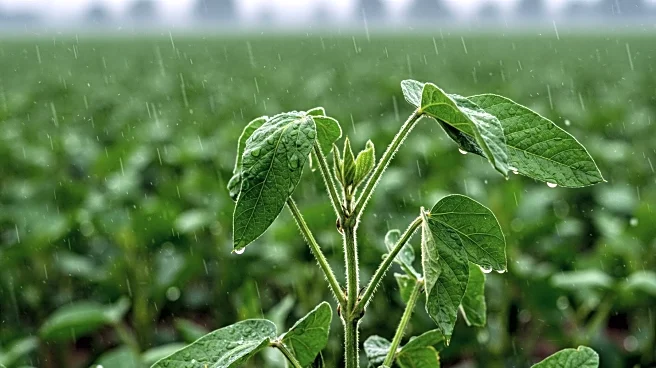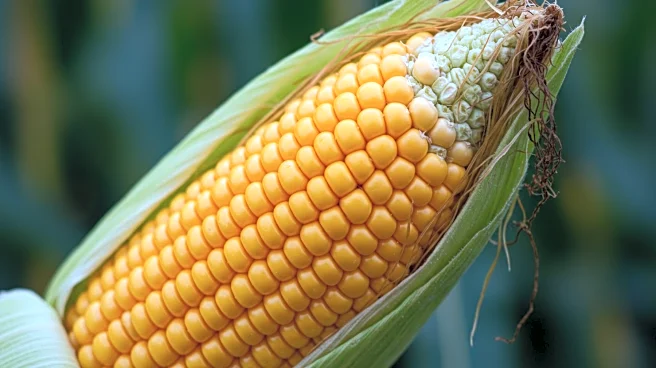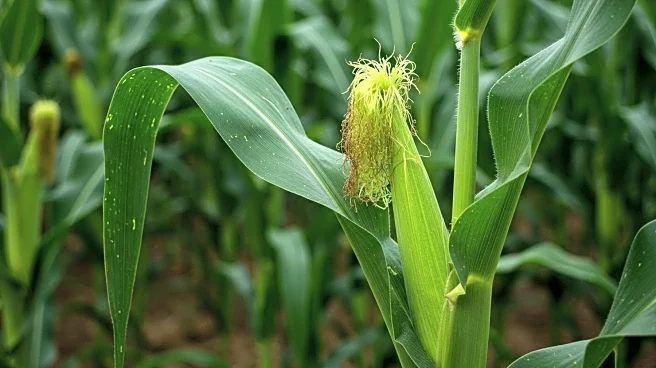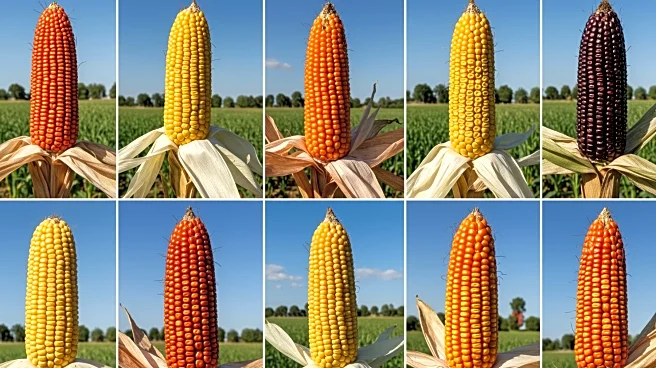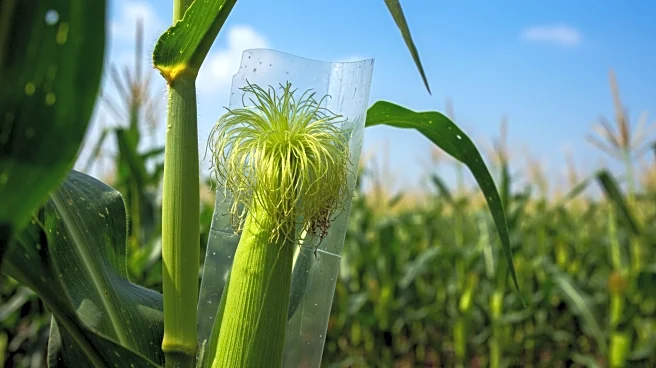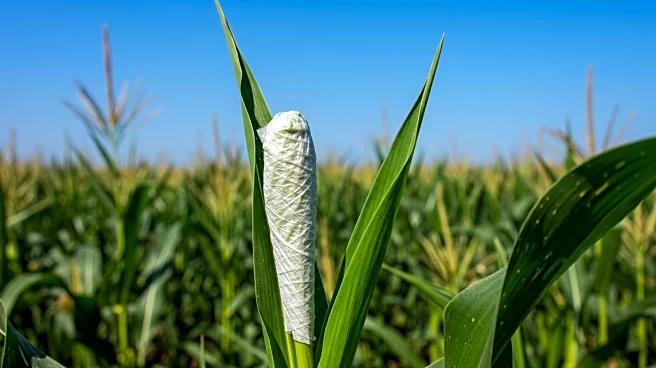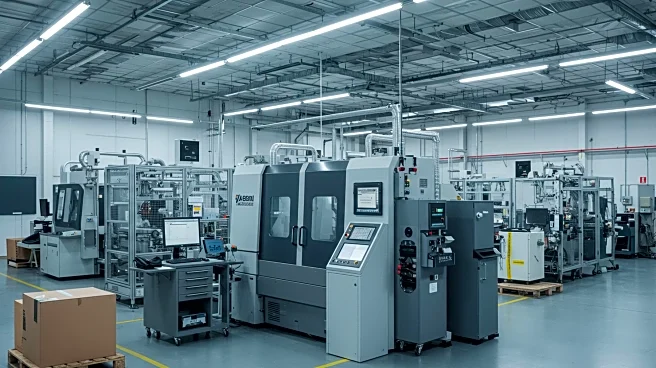What's Happening?
Sudden death syndrome (SDS), a fungal disease affecting soybeans, is thriving in Iowa due to optimal weather conditions. The disease, which has no cure once it affects the field, can lead to significant yield losses. Daren Mueller, a plant pathologist with Iowa State University Extension and Outreach, noted that the current conditions are the most favorable for SDS since 2018. The disease thrives in cool, wet springs followed by heavy summer rains, which have been prevalent across most of Iowa. The fungus can live in the soil for several years, feeding on dead plant material, and is exacerbated by wet conditions during spring planting. Once the disease reaches the foliar stage, it causes leaves to turn yellow, brown, and sometimes drop off. Agronomists have reported cases of SDS in all regions of Iowa except the southwest.
Why It's Important?
The resurgence of SDS poses a significant threat to soybean yields in Iowa, a major agricultural state. The disease's impact is heightened by the lack of effective treatments once the plants are affected, leaving farmers with limited options to mitigate losses. This situation underscores the importance of seed treatments as a preventive measure. The widespread presence of SDS also complicates efforts by seed companies to accurately rate their varieties for resistance, potentially affecting future planting decisions and seed development. The economic implications are substantial, as reduced yields can affect local and national markets, influencing prices and supply chains.
What's Next?
Farmers are advised to document the type of seed used and assess the extent of the disease's impact through aerial imagery. Collaboration with neighbors and seed companies is encouraged to share experiences and strategies. The ongoing challenge for seed companies is to improve resistance ratings for their varieties, which may require more extensive research and development. As the disease continues to affect crops, stakeholders may push for more robust preventive measures and support for affected farmers.
Beyond the Headlines
The spread of SDS highlights broader issues in agricultural resilience and the need for adaptive strategies in response to changing weather patterns. The disease's persistence in the soil raises questions about long-term soil health and management practices. Additionally, the situation may prompt discussions on the role of climate change in altering disease dynamics and the importance of sustainable farming practices.
